Think Italy invented ice cream? Think again. Travel back in time to uncover the real origins of this global favourite — the facts might just surprise you!
Who doesn’t love ice cream? It’s sweet and refreshing, there are endless flavour options and of course, the delicious toppings – it’s a much-loved dessert the world over. But have you ever wondered who first made it and where it all began?
Ice cream has a rich history with contributions from various countries, making it difficult to attribute the honour of its invention to any one nation.
In this article, we’ll delve into the early beginnings of ice cream, highlight the earliest recorded examples of this frozen dessert, and explore the changes and adaptations it has undergone through the years to become the sweet treat we know and love today.
Join us on this journey through the ages and across the globe to discover the origins and stages that shaped this much-loved dessert.
Ancient Beginnings
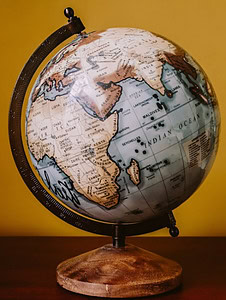 While the true origins of ice cream remain somewhat disputed, several countries have made significant contributions to its development.
While the true origins of ice cream remain somewhat disputed, several countries have made significant contributions to its development.
Ice cream can be traced back to ancient times when civilisations discovered the joy of consuming frozen desserts. Persia (now Iran), ancient Rome, and China all had their own versions of sweetened, chilled treats.
🏺 Frozen Treats of the Ancients – Persia, Rome & China
The Romans had a fondness for chilled desserts. As early as 70 BC Emperor Nero is said to have sent his servants to the mountains to collect snow, which was then flavoured with honey, fruits, and juices. While it may not resemble the ice cream we know today, it marked an important milestone in frozen dessert history.
China is often credited with creating the first ice creams, as early as 200 AD. Ancient Chinese emperors were known to enjoy a frozen concoction made from milk, rice, and snow. They would mix these ingredients and then cover the containers with a mixture of saltpetre and ice to achieve freezing temperatures.
Persia introduced a chilled dessert called “faloodeh,” which gained popularity during the 5th century AD. It consisted of vermicelli noodles mixed with rose water, sugar, and ice. This precursor to modern-day ice cream was a favourite among the Persian nobility.
Some may argue, however, that while it’s evident certain ancient cultures were able to mix snow and ice with varying appealing flavours since the beginning of our history, does this actually meet the criteria of ‘Ice Cream.’
Italian Innovations
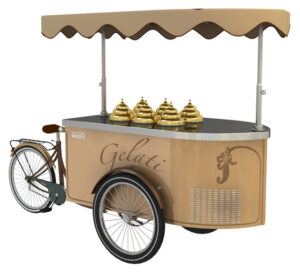 Although the ancient civilisations laid the foundation for frozen desserts, it was the Italians who made significant strides in transforming ice cream into its recognisable form that we know and love today.
Although the ancient civilisations laid the foundation for frozen desserts, it was the Italians who made significant strides in transforming ice cream into its recognisable form that we know and love today.
In the 16th century, Catherine de’ Medici, an Italian noblewoman, married the future King of France and introduced the concept of gelato to the French court.
🍨 Gelato Magic – Italy’s Creamy Contribution to Ice Cream History
The Italians perfected the art of making gelato, which is the precursor to modern ice cream.
Unlike its predecessors, gelato was made with milk instead of water, resulting in a creamier and richer texture. The secret to its smoothness lay in a slow churning process that incorporated less air, giving gelato its signature dense consistency.
The French Connection
 While Italy played a pivotal role in ice cream’s evolution, France also contributed significantly to its development. In the 17th century, Sicilian-born Francesco Procopio dei Coltelli (formerly Cutò) opened Café Procope in Paris, which became one of the first establishments to serve ice cream to the public. Procopio is credited with being the inventor of modern gelato.
While Italy played a pivotal role in ice cream’s evolution, France also contributed significantly to its development. In the 17th century, Sicilian-born Francesco Procopio dei Coltelli (formerly Cutò) opened Café Procope in Paris, which became one of the first establishments to serve ice cream to the public. Procopio is credited with being the inventor of modern gelato.
Café Procope & The Birth of the Modern Scoop
Café Procope’s success inspired other French chefs to experiment with frozen desserts. They introduced innovative techniques such as using eggs and cream to create a custard base, resulting in more luxurious and decadent ice cream.
Timeline of Ice Cream – From Ancient to Modern Ice Creams
⏳ From Snow to Scoop, A Global Timeline of Ice Cream
| 📅 Date | Milestone in Ice Cream History |
|---|---|
| 500 BC | Persians poured grape juice concentrate over snow for a summer treat. |
| 400 BC | “Faloodeh” invented — iced vermicelli dessert with rosewater and sugar. |
| 37–68 BC | Roman Emperor Nero flavoured snow with fruit and honey. |
| 200 AD | Chinese emperors enjoyed frozen rice and milk concoctions. |
| 800–900 | Arabs refined recipes using milk, cream, rosewater, and sugar. |
| 13th Century | Marco Polo brings frozen dessert knowledge back to Italy. |
| 1533 | Catherine de’ Medici introduces gelato to France. |
| 1744 | Scottish colonists bring ice cream to North America. |
| 1846 | Nancy Johnson invents the hand-cranked ice cream freezer. |
| 1904 | Ice cream cones debut at the St. Louis World’s Fair. |
| 1934 | First chocolate-covered “Eskimo Pie” hits the market. |
| 1978 | Ben & Jerry’s opens, pioneering bold flavours and social branding. |
| 2020s | Rise of plant-based, low-calorie, and artisan ice creams worldwide. |
🕰️ Have we missed a key date in ice cream’s history?
Drop us a comment — we’d love to hear what other milestones you think should be on the timeline!
🎥 Want to see ice cream history come to life?
Check out the video below for a fascinating look at how this iconic treat evolved across cultures — from ancient inventions to modern scoops!
Ice Cream in the 21st Century – Trends and Innovations
Ice cream’s journey has continued to evolve with the times. In the 21st century, the frozen dessert industry has embraced inclusivity and creativity, with trends like vegan and dairy-free options, artisanal gelatos, and global flavours inspired by traditional recipes. For example, mochi ice cream from Japan and spiced kulfi from India have become international sensations, showcasing the influence of regional delicacies on global tastes.
🚀 Modern Flavours & Innovations Shaping Today’s Ice Cream Scene
Additionally, innovative flavours such as salted caramel, avocado, and even curry-infused scoops highlight the ingenuity of modern ice cream artisans. Artisanal ice cream parlours worldwide now champion small-batch production and local ingredients, offering adventurous flavours like chilli chocolate and lavender honey to cater to every palate.
Vegan options have surged in popularity, with coconut milk and oat milk-based ice creams making this beloved treat accessible to all. These innovations demonstrate that ice cream’s rich history remains a source of inspiration, blending traditional recipes with contemporary trends to create new favourites.
From Simple Ice and Flavourings to a Multi-Billion Dollar Industry
What began as a humble treat of ice and flavourings has now transformed into a multi-billion-dollar global industry, standing as one of the most lucrative segments in the food sector. Ice cream’s universal appeal transcends cultures and climates, making it a staple in the diets of millions. Today, the ice cream market is valued at over $80 billion annually and continues to grow at a remarkable pace.

💰 How Ice Cream Became a Multi-Billion Dollar Business
The industry owes its success to continuous innovation and adaptation. From the development of mass-production techniques in the early 20th century to the current rise of artisanal and vegan options, ice cream has always been ahead of its time. International brands like Magnum, Ben & Jerry’s, and Häagen-Dazs dominate supermarket freezers, while local parlours thrive on offering bespoke flavours and experiences. The expansion of delivery services and innovative retail strategies has further fuelled demand, making ice cream accessible at the click of a button.
Notably, technological advancements have played a pivotal role. Modern refrigeration techniques, streamlined production, and creative marketing campaigns have elevated ice cream to its current global status. Events like National Ice Cream Day and the emergence of social media trends featuring outrageous or aesthetically pleasing creations have cemented its place in pop culture.
From the streets of Naples to international supermarket aisles, the journey of ice cream exemplifies how a simple dessert can become a symbol of both indulgence and innovation. And the best part? This “cold gold” shows no signs of slowing down as it continues to delight palates and wallets alike.
👉🏽 For more information on the rise of the Ice cream industry, please see our articles – Move over Mr Musk, Ice Cream is The Next Big Thing! and The Scoop on Artisan Ice Cream
So Which Country Invented Ice Cream Then?
Determining the exact country that invented ice cream is challenging due to its ancient origins and the contributions made by various cultures throughout time. While China, Persia, and Rome experimented with frozen treats centuries ago, it was the Italians who refined the concept of ice cream and introduced the world to Gelato! The slow churning process and the use of milk instead of water in gelato creation revolutionised the dessert, giving it a creamy and luxurious texture that continues to captivate taste buds today.
 Additionally, French chefs in the 17th century played a significant role in the development of ice cream by introducing custard-based recipes using eggs and cream.
Additionally, French chefs in the 17th century played a significant role in the development of ice cream by introducing custard-based recipes using eggs and cream.
This new method added richness and decadence to the frozen treat, elevating it to new heights of indulgence.
Café Procope in Paris, founded by Francesco Procopio dei Coltelli, became a prominent destination for ice cream lovers and inspired others to experiment with frozen desserts.
🌍 Whose Scoop Wins? Deciding the Global Debate
As ice cream gained popularity across Europe, it found its way to England, where Italian immigrants established ice cream shops and introduced the joy of this delicious frozen treat to the British. The upper class quickly embraced the frozen delicacy, and ice cream became synonymous with luxury and sophistication.
Across the Atlantic, ice cream arrived in the American colonies, gracing the table of President George Washington himself.
George Washington reportedly spent over $200 on ice cream during the summer of 1790 — the equivalent of thousands today!
As time passed, ice cream parlours sprouted throughout the United States, making this frozen delight more accessible to a broader audience. The 19th and 20th centuries have witnessed advancements in technology, such as the hand-cranked ice cream churn and industrial production, further fuelling the popularity and availability of ice cream.
In the United States, countless iconic ice cream flavours were invented, captivating the taste buds of generations. Innovations like chocolate chip cookie dough and cookies and cream brought exciting variations to the world of ice cream. The introduction of ice cream cones provided a cone-venient and portable way to enjoy this frozen treat on the go.
And The Honour Goes To…

Ice cream’s story is woven with diverse cultures, ideas, and flavours. It’s a dessert that has captured hearts around the world.
From its early days with snow and fruit to the lavish European courts, ice cream has travelled through time and borders, evolving from simple treats to a global phenomenon.
Different countries have contributed to the variety of ice cream flavours and methods, each adding its unique chapter to the tale.
🏆 A Sweet Journey Across Cultures
Today, ice cream continues to bring joy and connect people globally, a testament to its enduring appeal and its sweet journey from ancient kitchens to modern ice cream shops.
And so, with all the above in mind, it’s quite difficult to attribute the honour of ‘Which Country Invented Ice Cream’ to any one country! We think it’s safe to say, a joint universal effort is probably most agreeable!
🌍 Curious how different cultures serve up their own unique spin on ice cream today? Check out our guide to the coolest ice cream styles from around the world — from Thai rolled ice cream to Italian affogato and everything in between!
Frequently Asked Questions About Ice Cream’s History
Q: Did Marco Polo really bring ice cream to Europe?
A: While some legends credit Marco Polo with introducing ice cream to Italy, historical evidence suggests he more likely brought knowledge of frozen desserts, rather than a specific recipe.
Q: What’s the difference between ice cream and gelato?
A: Gelato typically contains less air, giving it a denser texture. It’s also churned slower and served at a slightly warmer temperature than traditional ice cream.
👉🏽 For more detailed guidance on the differences between Ice Cream and Gelato please head on over to our article – Gelato vs Ice Cream – Isn’t it the Same Thing?
Q: Which country eats the most ice cream?
A: The United States holds the record for the highest ice cream consumption per capita, but the UK isn’t far behind, with soft-serve 99s remaining a summer favourite.
Which fact about ice cream surprised you the most? Do you have a favourite ice cream tradition or unique flavour you adore?Share your thoughts in the comments below, or spread the word by sharing this article with your fellow ice cream enthusiasts! Let’s keep the love for ice cream alive!
We hope that you have enjoyed our article exploring which country invented ice cream, we hope we have inspired you to try some of our recipes which you can find in the drop-down Recipe & Method menus above. If you have any questions, please drop us a comment below and we will be happy to get back to you.
Stay connected for more homemade ice cream inspiration! Share your homemade ice cream masterpieces with us on social media, and connect with a community of ice cream enthusiasts. Join us for mouthwatering recipes, expert tips, and exclusive updates. Follow us on Pinterest, Instagram, Facebook, and X by clicking on any of the social media icons below.
Disclosure: This post contains affiliate links. If you click on these links and make a purchase, we may earn a small commission at no additional cost to you. This helps support our website and allows us to continue creating content. Thank you for your support!














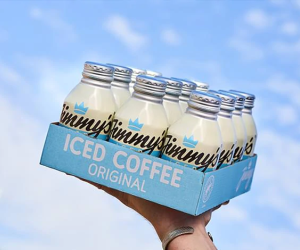











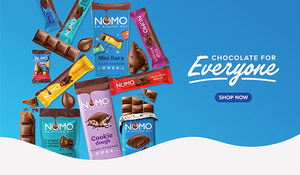









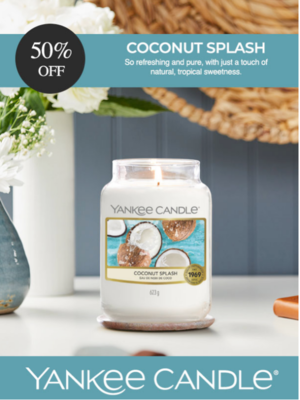





Wow, I never realized how many countries had a hand in shaping the ice cream we know today! From the ancient Romans enjoying snow with fruit and honey to Italy’s gelato revolution, it’s amazing to see how this sweet treat has evolved over time. I’m especially fascinated by how the Chinese and Persians were making frozen desserts long before they became a global sensation. 🍦
I personally love how ice cream continues to innovate, with new flavors and even vegan options popping up everywhere! Has anyone here tried some of those unique global flavors like mochi ice cream or kulfi? I’d love to hear what the most unusual (or delicious) ice cream flavor you’ve tried is!
Thanks for sharing this sweet journey through history – I’ll never look at my next scoop the same way again! 😊🍨
Hi Roopesh,
Thank you for your enthusiastic and thoughtful comment! It really is fascinating how ice cream has evolved across so many cultures, isn’t it? From the ancient traditions of the Chinese and Persians to the iconic gelato of Italy, each contribution has made this sweet treat the global favourite it is today.
I absolutely agree—ice cream’s ongoing innovation is incredible! Mochi ice cream and kulfi are such fantastic examples of how different cultures bring unique flavours and textures to the table. One of the most unusual ice cream flavours I’ve tried is black sesame—it’s rich, nutty, and absolutely delicious!
Our article – Unique Homemade Ice Cream Recipes – Deliciously, Curious Creations – highlights a few more unique and delicious flavours that you might like to check out too.
What about you? Have you tried any particularly unique or memorable flavours? I’d love to hear your recommendations.
Thank you again for sharing your thoughts—it’s always a joy to connect with fellow ice cream enthusiasts!
Best wishes,
Cherie
This was such a fun read! It’s amazing how many countries contributed to the evolution of ice cream—China, Persia, the Arab world, Italy, and France all played a role. I love how global the story really is. Do you think any one country deserves the credit, or should it be seen as a shared invention?
Hi Kiersti,
Thank you so much for your lovely comment — we’re so glad you enjoyed the article! Isn’t it incredible just how many cultures have had a part to play in the history of ice cream? From ancient Chinese emperors to Persian royalty and Italian artisans, it really is a shared global treat.
As much as we love a good scoop of gelato, we’d have to agree — ice cream’s invention feels more like a beautiful collaboration across time and continents than something we can pin to one place.
If you’d like to know how these global interactions play out today in ice cream styles and flavours, head over to our article – The Coolest Ice Cream Styles From Around The World – which shows how diverse ice cream is today, very fascinating to see.
We’d love to hear more about your favourite flavours or traditions too — do you have a go-to ice cream memory or style you love?
Thanks again for dropping by and sharing your thoughts.
Cheers
Cherie